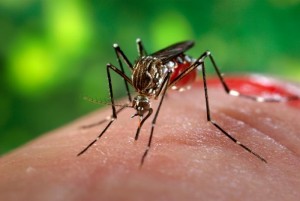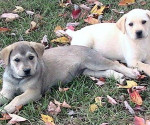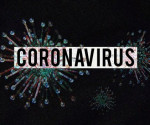Philippines: Dengue fever cases exceed 95,000 so far this year
The Philippines Department of Health (DOH) released the latest dengue fever data and the numbers continue to climb, even though the August numbers were significantly lower than those of the same period in 2011.
According to the latest data released by the DOH, there have been 95,142 cases of dengue from January to September 2012, or an increase of 13% compared to the same period last year with 84,244 cases.
According to an ABS-CBN report this week, the total number of deaths as of September is 549, higher than 486 during the same period last year.
Most of the dengue cases were recorded in Metro Manila with 19,602. Central Luzon and Southern Luzon followed with 14,791 and 14,417 cases, respectively.
DOH spokesperson and National Epidemiology Center Dr. Eric Tayag said dengue cases were down by 41% in August with a recorded 16,859 cases, lower compared to 28,549 cases in 2011.
Tayag says the decrease of the mosquito borne virus in last month may be attributed to the peak of the habagat (southwest monsoon) season in August where heavy rains were experienced.
Still, Tayag says the public needs to remain vigilant in preventing mosquito bites.
Dengue fever is an infectious disease carried by mosquitoes and caused by any of four related dengue viruses. This disease was once called called “break-bone fever” because it sometimes causes severe joint and muscle pain that feels like bones are breaking.
Dengue fever of multiple types is found in most countries of the tropics and subtropics particularly during and after rainy season.
There are four types of dengue virus: DEN-1, DEN-2, DEN-3 and DEN-4.
People get the dengue virus from the bite of an infected Aedes mosquito. It is not contagious from person to person.
There are three types of dengue fever in order of less severe to most: the typical uncomplicated dengue fever, dengue hemorrhagic fever (DHS) and dengue shock syndrome (DSS).
The symptoms of classic dengue usually start within a week after being infected. They include very high fever, up to 105°F, severe headache, pain behind the eye, severe joint and muscle pain, nausea and vomiting and a rash.
In cases of DHF and DSS, all four types can be the cause in descending order of frequency; type 2, 3, 4 and 1.
There is evidence that types 2 and 4 need to be secondary infection to cause DHF, while primary infection with types 1 and 3 can cause DHF.
Symptoms of DHF include all the symptoms of classic dengue plus severe damage to the blood vessels. Bleeding from the nose, gums or under the skin are common. This form of dengue can be fatal.
Symptoms of DSS include all of the above symptoms plus; fluid leaking outside of blood vessels, massive bleeding and shock. This form of the disease usually happens in children experiencing their second infection.
Two-third of all fatalities occurs among children.
There is no treatment for dengue, just treat the symptoms. Persons who think they have dengue should use analgesics (pain relievers) with acetaminophen and avoid those containing aspirin. They should also rest, drink plenty of fluids, and consult a physician.
There is not a vaccine for dengue fever. The CDC recommends the following preventive measures:
- The best preventive measure for residents living in areas infested with Aedes mosquito is to eliminate the places where the mosquito lays her eggs, primarily artificial containers that hold water.
- For people living in areas with dengue, the risk of being bitten by mosquitoes indoors is reduced by utilization of air conditioning or windows and doors that are screened.
- Proper application of mosquito repellents containing 20% to 30% DEET as the active ingredient on exposed skin and clothing decreases the risk of being bitten by mosquitoes.
















[…] unprecedented biological outbreaks including: Schistosomiasis, Leptospirosis, Cholera, Hepatitis A, Dengue Fever, Chikungunya and Anthrax. Also since 2012, the Philippines suffered numerous natural and man-made […]
[…] unprecedented biological outbreaks including: Schistosomiasis, Leptospirosis, Cholera, Hepatitis A, Dengue Fever, Chikungunya and Anthrax. Also since 2012, the Philippines suffered numerous natural and man-made […]
[…] unprecedented biological outbreaks including: Schistosomiasis, Leptospirosis, Cholera, Hepatitis A, Dengue Fever, Chikungunya and Anthrax. Also since 2012, the Philippines suffered numerous natural and man-made […]